Should you keep crawl space vents open or closed? Experts reveal how and when to close for less moisture, mold, and better energy efficiency in your home
There are preferred times to keep them open or closed
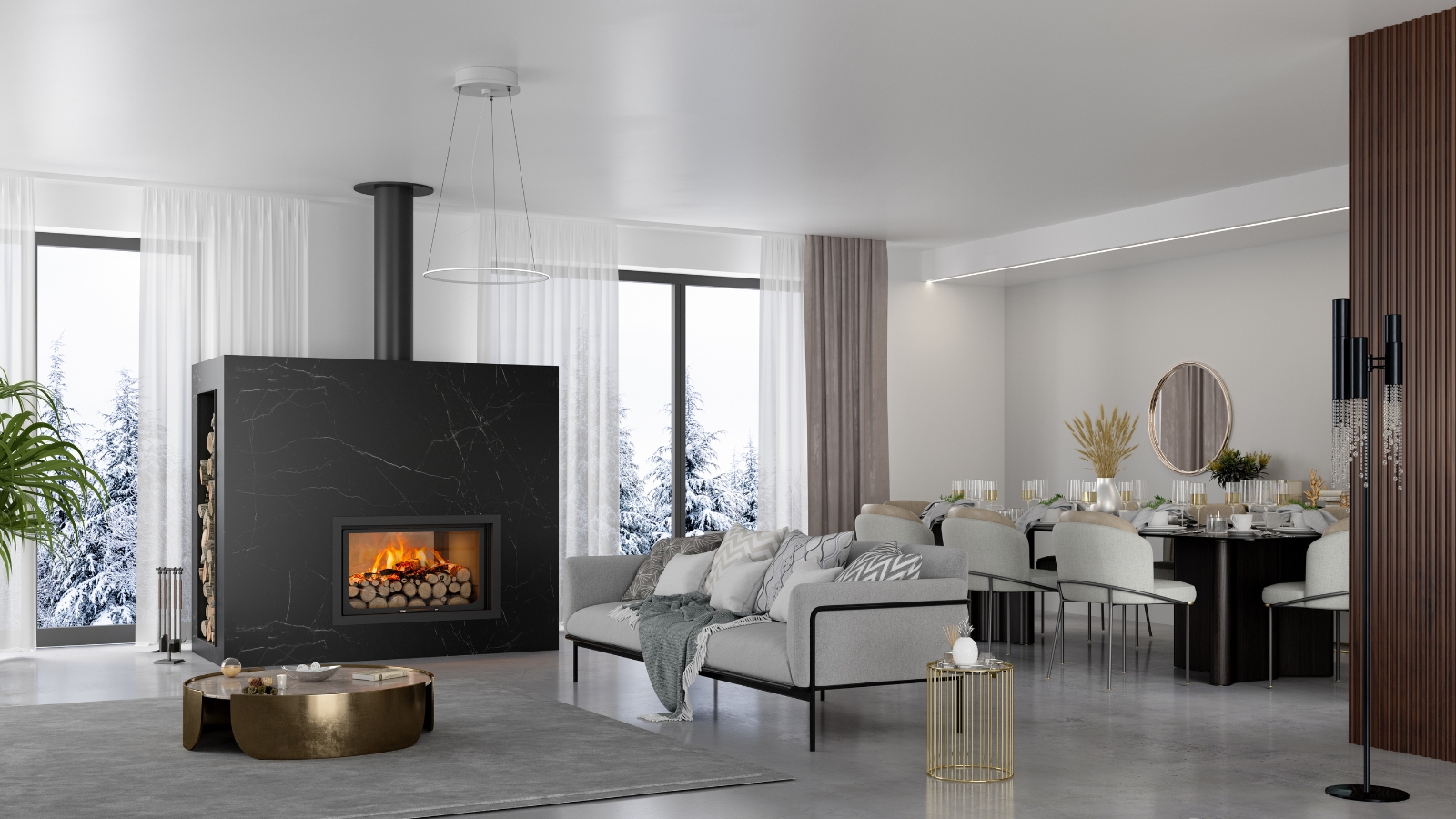
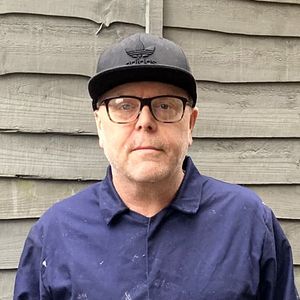
Knowing whether to keep your crawl space vents open or closed at particular times of year will transform the moisture levels in your home. But get it wrong, and it could lead to wider structural issues needing expensive repairs or mold remediation.
Knowing how to reduce humidity in a house and in a crawl space will help eliminate these issues and bring with it plenty of benefits including lower bills and less time spent on maintenance or dealing with mold.
Here our HVAC and air quality pros share what you need to know to successfully manage your home's air vents.
Should you keep your crawl space vents open or closed?
It’s a simple question with not such a simple answer as Michael Rubino, mold and air quality expert and founder of HomeCleanse explains, ‘In most cases, keeping crawl space vents closed year-round is best, especially if the crawl space is encapsulated or has a vapor barrier.
‘It helps control moisture levels, stabilize temperatures, and prevent mold or pest infestations.’ It's a helpful step to help get rid of common winter pest infestations.
As a rule of thumb, Rubino advises the two following parameters to consider:
- Seasonal adjustments: It may be beneficial for vents to be opened briefly during dry or mild months, typically spring or fall, to facilitate air exchange. However, open periods should be limited to a few hours daily on dry days, preferably in the early morning or late afternoon.
- Ideal schedule: In most cases, vents can be left closed year-round, especially if the crawl space is sealed and equipped with a dehumidifier. Homeowners in dry climates may choose to open vents for limited hours weekly during the driest months, but they should contact a qualified professional first to ensure that it won't create unwanted issues.
Rubio share when you open your vents to be mindful of duration and dehumidifiers, explaining, ‘Without one of the best dehumidifiers, you’d want the vents open and cross ventilation to ensure the humidity doesn’t become stagnant’.
In arid or colder climates, Rubino says, ‘Temporary ventilation during milder seasons can help mitigate any buildup of stale air if they’re not sealed. That being said, they should never be open during the winter months as cold air flows directly into the crawl space, making it difficult to maintain a stable, warmer temperature around plumbing lines, often resulting in frozen or burst pipes.’
Definitely a plumbing disaster to avoid.
Finally, Rubino reveals the common air vent mistakes homeowners make and should avoid:
- Leaving vents open year-round: Constantly open vents can lead to uncontrolled moisture levels, mold, and structural damage, especially in humid or rainy regions. Learn how to check for mold in your house in our detailed guide.
- Failing to monitor humidity levels: Without monitoring crawl space humidity, homeowners can miss signs of excessive moisture, which can negatively impact indoor air quality as mold and bacteria can begin growing and releasing particles into your indoor space. A Bluetooth enabled home humidity monitor from Amazon will help.
- Skipping vapor barriers or encapsulation
These barriers significantly reduce the need for open vents by effectively managing moisture levels in the crawl space. You can buy tear-proof and resilient rolls of plastic crawl space vapor barrier sheets at Amazon.
What is a crawl space and how does it work?
Shu Saito, plumber and water filtration expert at All Filters LLC explains, ‘A crawl space is an open area beneath the house floor that provides access to utilities like plumbing, electrical wiring, and HVAC.’
They get their name from the fact that you typically have enough space to crawl around in as Saito shares, ‘Crawl spaces are relatively small in height, normally in the range of 1-3 feet, and have just enough space for partial movements that enable maintenance and repair.’
But they are not just there for access to utilities, Saito continues, ‘They work to insulate the home and regulate moisture inside the home if they are serviced adequately and the crawl space ventilation is appropriately implemented.’
But if a crawl space isn’t adequately maintained or ventilated Saito warns, it can cause unwanted issues as leading to mold growth which will eventually cause structural damages.
Check for common types of household mold and make sure to get rid of them and find their source.
Types of crawl spaces vents
There are a number of crawl space vent types, with automatic, manual, and powered vents being the common options found in the home. Here Saito explains the different types and how they work:
- Automatic vents: These open and close themselves depending on the temperature and humidity. In locations with a moderate climate, these features can work well. You can find automatic vents at The Home Depot.
- Manual vents: They need to be adjusted often, although they typically prove to be cheaper and simpler. Having looked through the options for manual vents available, they are generally not highly rated by shoppers, but they are cheaper. We usually only recommend items with at least 4.5 stars out of 5, but 4/5 was the best we could find at a cheap price point, with the Master Flow manual vent from The Home Depot. Their aluminium manual vent with dampener is highly rated with 5 stars, but is over $200 dollars a piece.
- Powered vents: These use a fan for airflow and ensure better control, but an energy source can be required at times. There are mid-range prices on offer for this electric powered vent at The Home Depot.
How many you need may influence your decision to balance your budget. Saito advises, ‘Standard requirements commonly include ventilation and you need one square foot of vent space for every 150 square feet in the crawl space’.
That calculation is with no vapor barrier installed. If you have a vapor barrier installed, such as the Viper CS Crawl Space Class A Woven Reinforced Vapor Barrier from Insulation4US, which Saito recommends, it's one square foot of vent space for every 300 square feet.
However, Saito says it's worth noting the newest building practices are leaning towards sealing crawl spaces due to the many advantages of controlling the environment.
Contact your local authority to check building codes in your area.
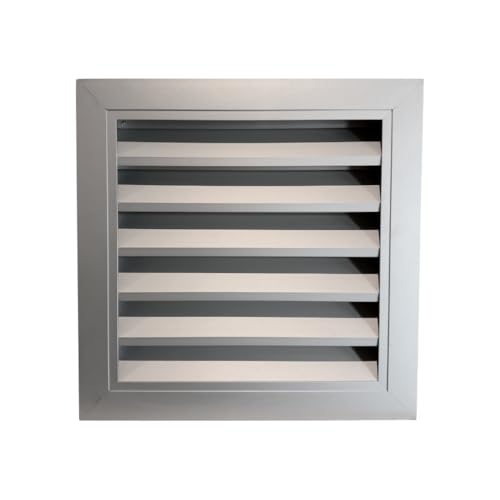
Plumber Shu Saito recommends this heavy Duty aluminum air vent made for use in residential, commercial or industrial spaces to ventilate crawl spaces. It is designed to prevent rain, snow and wind ingress and has a mesh covering to stop birds and bugs coming inside.
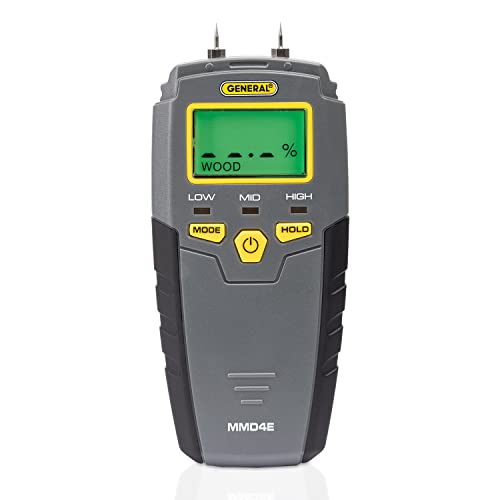
To find out how much moisture is in your crawl space, Saito recommends using this moisture meter to check its levels. It will help you determine what action to take next to stop mold and rot taking over.
FAQs
Is it bad to block a crawl space vent?
If you block a crawl space vent it can work well, but it may lead to other problems. Saito explains, ‘While blocking a crawl space vent is effective, especially in humid climates to ensure consistency in preventing moisture problems, one can get stale air or musty odors due to poor sealing and ventilation methods.’
He adds, ‘If someone has blocked the vents, it automatically becomes necessary to install a dehumidifier or vapor barrier to control the moisture level. To that effect, it helps in avoiding adverse effects while maintaining air quality in space.’
Learn what a humidifier does.
Do all houses have crawl spaces?
Not all homes are built with crawl spaces, the location and local climate determines what lies under your home as Saito shares, ‘Houses that are built in colder regions or those with high water tables have basements, while the ones that are located in warmer and dry areas are known to have slab foundations.’
If you do have a basement, ask yourself should you insulate a basement ceiling? It will bring several benefits if you do.
Saito adds, ‘When the soil or the weather conditions in an area make it difficult to construct basements, some access beneath the home is necessary, this is when a crawl space is more common.’
How much does a crawl space vent cost?
This will depend on what type of crawl space vent is going to be used. At the lower end of the price scale are manual vents. Saito shares, ‘Manual crawl space vents, which are usually $15 to $25 per unit, run lower than the automatic crawl space vents like this Master Flow Automatic Foundation Vent from Home Depot, which can be as high as $50 per unit or more, depending on the model.’
Further up the price scale are powered vents which cost more, Saito explains why, ‘Powered vents, of course, include fan systems and are somewhat expensive to buy, beginning at about $100 or higher, depending on how many pieces an individual may need.’
And it's not just the cost of the vent itself you need to think of as Saito adds, ‘Installation fees, if needed, would be an added cost. But, it all depends on the level of control you need.’
Should you seal up crawl space vents?
This will depend on where you live and the local climate. Saito suggests that, ‘Sealing is important but not without assessing the needs of the home.’ He adds, ‘It might be a decent option in humid or cold climates where intrusion by moisture or air can be an issue.’
Saito adds a note of caution, ‘Poor sealing with no ancillary methods of moisture control would ensure musty odors and unwanted smells, especially if there was water leakage in the area.’
Vernon Trollinger from texaselectricityratings.com has personal experience of crawl space vents and suggests, ‘You should completely seal up your crawl space and not use any venting at all. EnergyStar says a complete and thorough sealing (or "encapsulating") of your home's crawl space can save 15% off your annual heating and cooling bills.'
But this might not work everywhere, Trollinger adds, ‘Building research has shown that this whole approach in many parts of the US doesn't work very well at all due to moisture and humidity.’
It might be worth the effort and time of checking with an experienced local contractor to get advice for your area as the fallout of bad vent management or crawl space maintenance, sealing and closure can lead to mold and rot, a terrible issue for any home.
Keeping your home free of mold is critical for the health of you and your home and knowing whether you should keep your crawl space vents open or closed a vital tool in your battle against mold and excess moisture.
Next, learn about the bad habits that increase the risk of mold in your home, signs of mold in your home and how to check for mold in your house to keep yours mold-free. We've also asked experts if you should close vents in unused rooms, or whether you should close window trickle vents in winter.
Sign up to the Homes & Gardens newsletter
Design expertise in your inbox – from inspiring decorating ideas and beautiful celebrity homes to practical gardening advice and shopping round-ups.

Steve has been a homes writer and editor for two decades, regularly contributing to brands like Homebuilding & Renovating Magazine. He is an avid DIYer with over 20 years of experience transforming and renovating homes. He specializes in painting and decorating but has strong all-around building skills, having worked in the industry for ten years.
-
 This decorative kitchen innovation – inspired by a 2000s color trend – will reshape kitchen design in 2026
This decorative kitchen innovation – inspired by a 2000s color trend – will reshape kitchen design in 2026This ombre kitchen finish caught our attention at the Milan Design Week – here's why we think it will rewrite decorative kitchen design in the future
By Jennifer Ebert
-
 Bathroom colors going out of style in 2025 – and the designer-approved shades to decorate with instead
Bathroom colors going out of style in 2025 – and the designer-approved shades to decorate with insteadThese are the colors to swerve in your bathroom decor if you want to create a stylish and design-led space, according to experts
By Emily Moorman
-
 Why does my house feel damp? Experts reveal the 7 common reasons, risks and fixes to apply right now
Why does my house feel damp? Experts reveal the 7 common reasons, risks and fixes to apply right nowIf your house smells musty, there might be underlying damp to sort out
By Sophie Warren-Smith
-
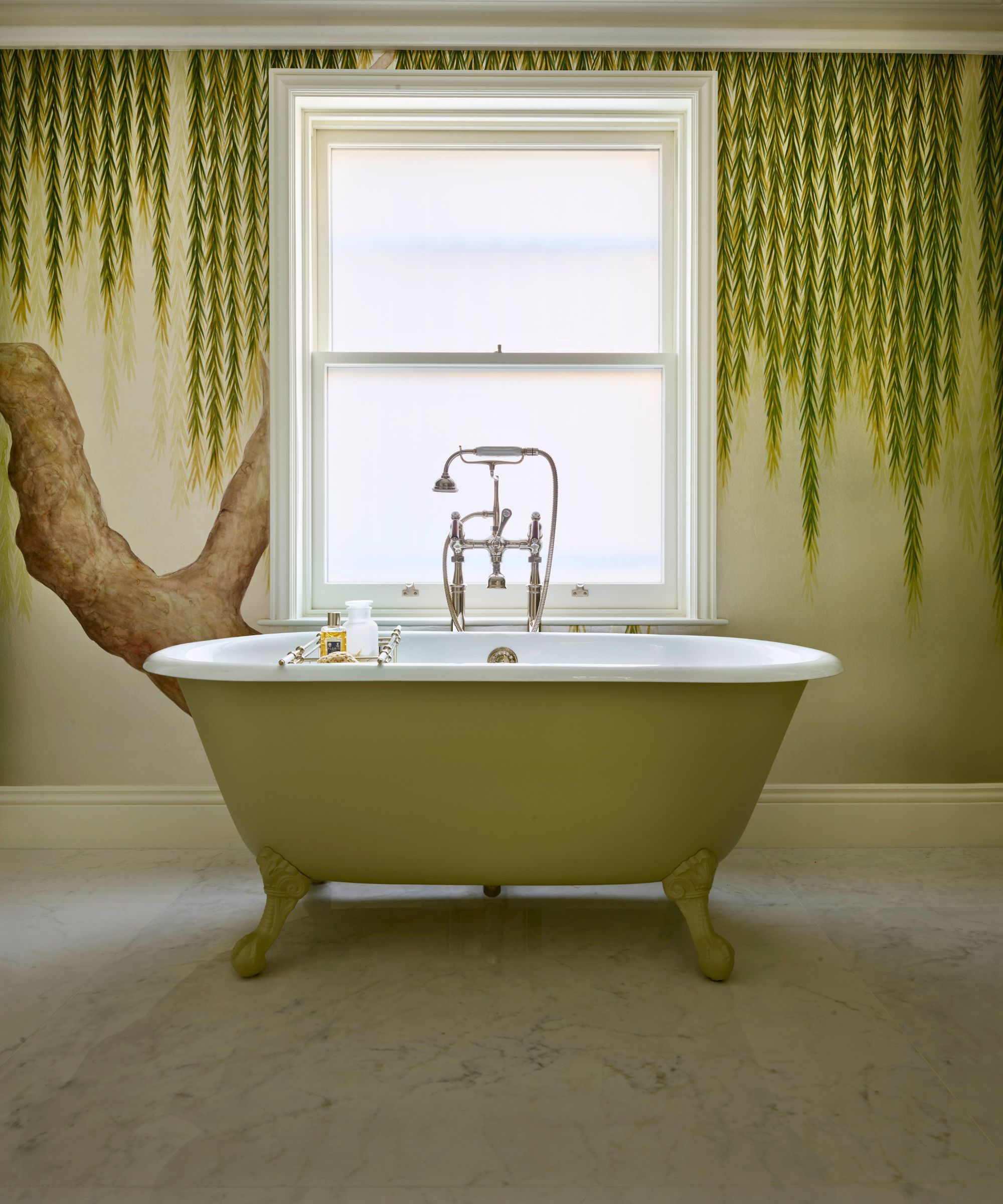 Do you have condensation on the outside of your windows? This simple rule of thumb determines if it's normal, or a sinister warning sign
Do you have condensation on the outside of your windows? This simple rule of thumb determines if it's normal, or a sinister warning signHVAC pros share expert insight
By Ciéra Cree
-
 HVAC pros reveal 2 'Goldilocks' ranges for the ideal room temperature in bitter winter – it differs from day to night, and room to room
HVAC pros reveal 2 'Goldilocks' ranges for the ideal room temperature in bitter winter – it differs from day to night, and room to roomKeeping rooms at the right temperature is vital for comfort and efficiency
By Ciéra Cree
-
 HVAC pros say this is the most efficient heating schedule to keep you warm at home all day – and why automating it is the best move
HVAC pros say this is the most efficient heating schedule to keep you warm at home all day – and why automating it is the best moveThere’s no one-size-fits-all – here’s how to tailor heating to your home
By Chiana Dickson
-
 How dust and dirt increases your energy bills – plus 5 ways HVAC pros deal with it to cut costs
How dust and dirt increases your energy bills – plus 5 ways HVAC pros deal with it to cut costsThese cleaning tips could save you hundreds
By Chiana Dickson
-
 Is your house heating unevenly? HVAC pros reveal 5 common reasons, plus their top tricks for consistent heating throughout your home
Is your house heating unevenly? HVAC pros reveal 5 common reasons, plus their top tricks for consistent heating throughout your homeEliminate hot and cold spots with these fixes
By Chiana Dickson
-
 What is a zoned heating HVAC system? We get the lowdown from the pros
What is a zoned heating HVAC system? We get the lowdown from the prosThis expensive addition could actually save you money
By Sophie Warren-Smith
-
 I spent years trying to combat window condensation – then a simple dish-soap trick turned out to be the key all along
I spent years trying to combat window condensation – then a simple dish-soap trick turned out to be the key all alongThe dish soap condensation hack takes five minutes to do, is oh-so effective, and cleaning pros love it
By Eve Smallman